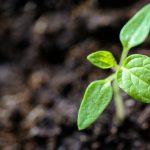When building a new home, not only are you tasked to select design and décor, you have an outdoor canvas that you will need to create. A beautiful outdoor space takes time, effort, and money. Creating a plan can help you save money and provide enjoyment throughout the process. Let’s get stated!
First, figure out what you want and what you already have to work with. Start by drawing a map of your yard and note what is already there; trees, shrubs, grass. Next, identify areas that get full sun and areas that are a bit more shaded. This is important because not all plants survive in certain environments. Mark areas where you would like to have paths. These paths can be grassy areas, stones, pavers, really anything. Another key component is where your water sources are. Will you install an irrigation system? Will you need to access water from your house? After mapping these important details, now its time to figure out what you want.
Deciding what you want can be the toughest part. What helped me when planning the landscape at my new home was to drive around surrounding neighborhoods to get a visual of what has worked for others. Researching on the web and grabbing landscaping books was also beneficial. Some questions to ask yourself during this decision making time is; Do I want something low maintenance? Do I want outdoor areas to relax in? Do I want a vegetable garden? Once you create a map and decide what you want, then it’s time to look at your budget.
Landscaping can be quite expensive but not feel that you have to make it perfect the first year. A yard takes time to establish but will eventually turn out how you envisioned it. Take a little time, enjoy the process, and watch it grow! Next, let’s choose your plants.
When choosing plants, trees, and shrubs, consider the plant’s height and width at maturity. This is super important when allowing adequate spacing for plants to thrive. Do your research and find out which plants grow best in your particular region. Lean towards using more native plants because they are already acclimated to the area and will need less overall care. Your local Cooperative Extension or Department of Agriculture can provide resources on best plants for your region. Now, the fun part begins! Preparation!
Time to dig out any weeds from your area and begin prepping your soil. Again, your local Cooperative Extension can test your soil to make sure it has an abundance of the required nutrients for your plants or crops. Most likely, your soil will need a boost, especially in new construction where the topsoil may have been stripped away. The solution is often simple: Add organic matter. Add a 2-3 inch layer of compost and dry grass clippings or decayed leaves to the soil when you till a new bed.

Once the area is ready, your imagination comes into play! While plants are still in their pots, place them in the area you mapped out. This is a fun process because there are no rules! If you don’t like the placement, just move it around until it’s to your liking. Then, remove plants from the container by pushing from the bottom. If the roots have grown into a big ball, use your fingers to untangle some of the roots before setting it into the hole. Pat soil into place around roots, then soak the soil with water. Water regularly for the first couple of weeks, depending on season, humidity and rainfall. If your not sure, just feel the soil 3 to 4 inches below the surface. If it feels dry, it’s time to water. Watering in early morning helps minimize evaporation.
Protect your valuable plants by using mulch. Mulch helps keep weeds out and moisture in. I suggest an organic mulch, such as a bark or leaves, or compost. This will nourish your soil as it decomposes. As your garden begins to grow, so will the weeds. Pull weeds often so they don’t take over the area where the plants are needing to expand and thrive. Get rid of dead or dying parts of flowers and shrubs while keeping an eye out for any destructive insects. You can control this by simply picking the insects off or spraying an insecticidal soap on the plant. This type of product can be found at your local garden center.
I hope this helped you feel a little more confident in starting your outdoor space at your new home. These are simply the basics but there is so much information out there on particular trees, plants and even starting a vegetable garden to grow your own food. Remember, plants only develop from generous and consistent good care from you.
SFY Recommends ~






